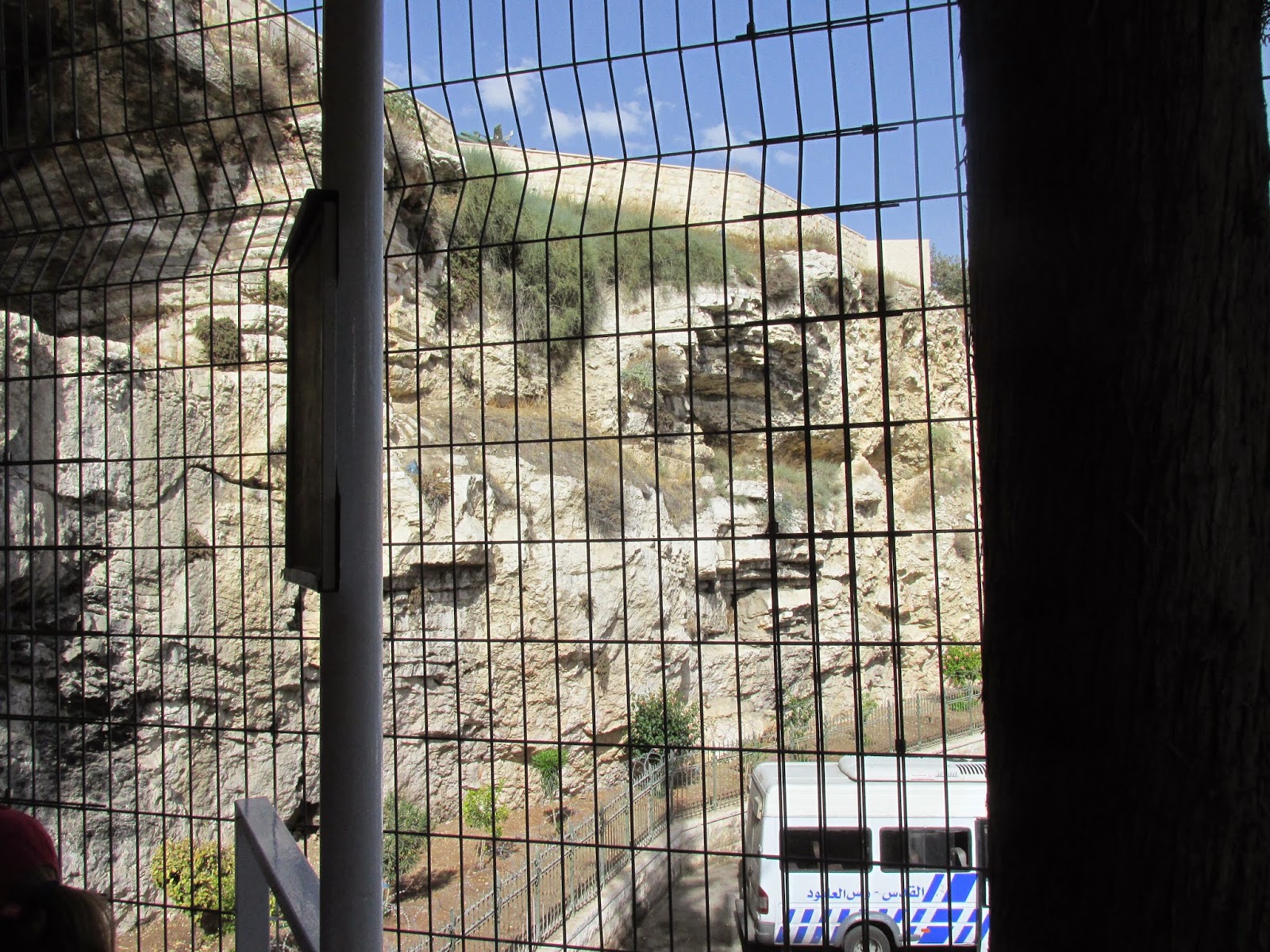This
past Wednesday, our field trip was a 'tour' of the tribal allotment to
Benjamin. Our first stop was right in the moshav’s backyard. Benj
talked about Kiriath-Jearim, which is a border city between the tribes of
Benjamin and Judah. We had already been there and talked about it, but
it's still neat to think about all the biblical history that is so close
to us!
We then got on the bus and went to one of the nine proposed locations for the
city of Emmaus. This location, Emmaus-Nicopolis, has tradition that goes
back to the 300s AD. The problem with this site is that it’s too far away
from Jerusalem according to the account given in Luke 24. Even though the
Nicopolis location is not likely to be the real location of Emmaus, we all got
a beautiful view of the Aijalon Valley!
Aijalon Valley
Lower Beth-Horon, a route mentioned in
Joshua 18:14, is on the northern border of Benjamin. The stories of the
victory over the Philistines in 1 Samuel 7, the victory at Geba-Michmash in 1
Samuel 14, and David’s attack of the Philistines in 2 Samuel 5 all have
connections to this route.
Looking out from the Beth-Horon
Ridge Route
Shepherd and his sheep! :)
Nebi Samwil was the next stop. It’s on the
top of a hill that commemorates the prophet Samuel. From here, we could
see Jerusalem from afar and the tel (archaeological dig site) of Gibeon.
Seeing the little hill where Gibeon was and how small it looked was
really fascinating! We talked about the story of the Gideonite deception
in Joshua 9. Crusaders who believed that the location was the city of
Ramah, where Samuel was buried, built Nebi Samwil, the church on the
hill. Benj, our teacher, thinks that this is the high place of Gibeon
where Solomon asked God for wisdom in 2 Chronicles 1. We had a little
reenactment of the battle depicted in 2 Samuel 2 of David verses Abner which
was really entertaining!
The hill in the center is the tel
of Gibeon
The church on Nebi Samwil
The next stop was Gibeah, where King Saul had his capital. The king
of Jordan also started to build a palace there in 1965, but it was never
finished. We got to climb all over it which was fun!
The Jordanian palace!
View from the palace...the towers
in the distance are on the Mount of Olives
We then stopped on a hill by The Pass. We were sitting where
Geba was in front of us and Michmash was behind. The story we read was of
Saul and his battle with the Philistines in 1 Samuel 13. The other
passage we read was Isaiah 10:28-32. What really amazed me about this
passage was that it’s so geographically accurate! At face value, it looks
like a poem or something, but it's actually a description of the land!
Tel Jericho was the next stop! According to the tile on the fountain
that’s right at the entrance, Jericho is the oldest and lowest city in the
world! Benj said that it is the lowest city in the world, and that the
city is from the pre-pottery Neolithic period! We were able to see some
of the layers that were revealed as archaeologists have dug down, which had
storage pottery in it and a dark, burnt layer. It’s so cool to see
archaeological evidence that correlates to the Biblical story in Joshua
6! Before we left, we stopped at the spring that Elisha purified.
The fortifications of Jericho
Excavations of the city...in
upper right (sort of!), there's a dark gray layer of ash!
Cooling off in Elisha's spring.
We then went to New Testament Jericho, where Herod the Great had a
palace. Between tel Jericho and the new Jericho is where Jesus
healed a blind man as told in Matthew 20 and Luke 18.
Herod the Great's palace in the
new Jericho
The last stop of the day was overlooking the
Judean Wilderness. This is where Jesus was tempted and is the
location that Isaiah 40:3-6 describes. The 'voice' that would cry in this
wilderness was John the Baptist.
The Judean Wilderness!
And that was the end of our
Benjamin tour!




























